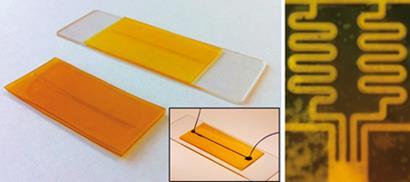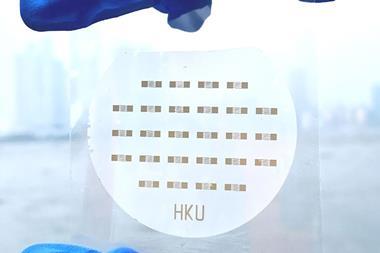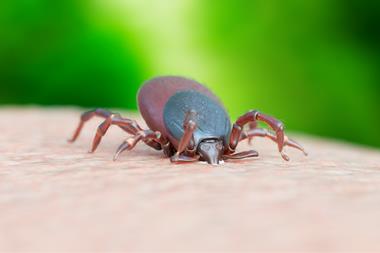A corn by-product has been used to make microfluidic sensing devices
US scientists have made microfluidic devices from a corn by-product, which makes them biodegradable and environmentally friendly.
Gang Logan Liu and colleagues at the University of Illinois Urbana-Champaign, have demonstrated that by using lithography and solvent or vapour deposition bonding, thin films of zein (a protein extracted from corn by-products) can be used to construct microfluidic channels, grids and wells as a green alternative to the plastic materials currently in use.
The team made the zein film by pouring a solution of zein in oleic acid and monoglyceride over a poly(dimethylsiloxane) (PDMS) strip and then drying it. The film was then peeled off the PDMS, leaving the zein film patterned on one side with microfluidic channels. The film was bonded to glass or an unpatterned zein film by either coating the patterned zein film with a thin layer of ethanol, or exposing it to ethanol vapour before being pressed to a warmed, degreased glass slide or zein film to complete the bonding process, leaving no observable seam. This bonding relies on the thermoplastic nature of zein, which is also used as an adhesive for other materials.

The group tested their zein microfluidic devices using several types of fluid, including fluorescent dyes and solutions of microbeads. They found that the devices did not leak and the channels could easily be viewed through a microscope. They also extended their work to produce a concentration gradient generator, mixing dye and solvent within serpentine channels to create several different concentration mixtures.
’By making devices out of a by-product of corn processing, the researchers seek to reduce the environmental impact of microdevice fabrication,’ comments Brian Kirby, from the Sibley School of Mechanical and Aerospace Engineering at Cornell University, US, an expert in microfluidics and nanofluidics. He notes that ’microdevices are small and are relatively low volume relative to consumer products,’ however, he looks forward to seeing the technology develop in chemical and biological analyses.
Liu anticipates being able to use the simple bonding of the zein films to make multilayer microfluidic devices in the future.
Tamsin Phillips
Link to journal article
Green microfluidic devices made of corn proteinsJarupat Luecha, Austin Hsiao, Serena Brodsky, Gang Logan Liu and Jozef L. Kokini,?Lab Chip, 2011, 11, 3419DOI:10.1039/c1lc20726a






No comments yet